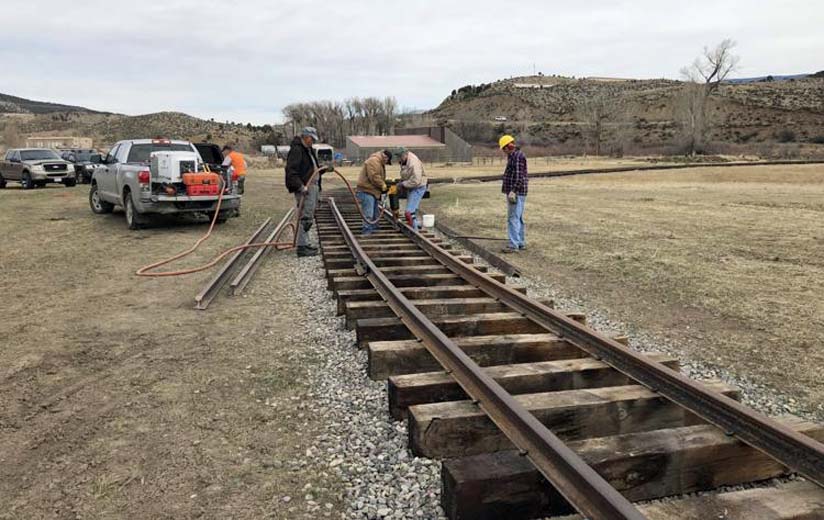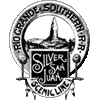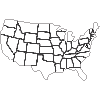
Ridgway Colorado USA - Nearly 70 years ago, Karl Schaeffer's parents came to Ridgway and rode on a Galloping Goose, one of seven motor rail cars constructed by the Rio Grande Southern Railroad for small passenger and cargo loads.
Though the geese were removed from service the year after the Schaeffers' visit, their family had already fallen in love with the area, and moved here from Oklahoma.
"My folks were railroad modelers and historians. Trains are in my blood. I've chased ghost railroads since I was a kid. Then, when I got out of college, I worked for the Rio Grande Railroad for 22 years in the mechanical and operations departments all over the western United States. When I retired rather early, I came back here and became one of the founding members of the Ridgway Railroad Museum," said Schaeffer, president of the Ridgway Railroad Museum.
With his expertise in restoring historic train cars, and the support of a dedicated volunteer crew, the museum has added several vehicles throughout the past decade, attracting railroad enthusiasts from across America and around the world.
Now, the museum is building a half-mile loop track and moving its outdoor displays to the property north of the historic Ridgway Railroad Depot building.
It plans to relocate the indoor displays there in three years.
The depot, which served the Denver & Rio Grande Western Railroad from 1891 until the early 1960s, is a natural home for the railroad museum, but it was a residence until 2015.
Then, in 2016, the Mitchell family offered the building to the Ouray County Ranch History Museum.
A donor was found who helped purchase and then lease it to the museum.
Moving from the Colona Grange, also known as the Colona Schoolhouse, in northern Ouray County, the ranch museum reopened at the depot in Ridgway in June 2017.
With every room filled with artifacts and photos from early ranching life, the museum has settled in nicely.
Even so, the museum's board and the donor have a bigger vision for preserving the area's history at that site, and it includes the railroad museum.
To the north of the depot is nearly 17 acres of pasture that has traditionally been used for cattle grazing, where a railroad track is being constructed.
This summer, the train shed, historic train cars, and equipment will be moved there from their current location next to the Ridgway Visitors Center on Sherman Street.
For the next three years, visitors interested in railroad history will visit both the indoor displays at the visitors center, and the outdoor ones at the Railroad Street property.
Meanwhile, the ranch history museum will be gathering data, designing a new ranch museum complex, and working on funding this important project through grants and donations.
The railroad museum will move into a main floor bedroom of the depot in 2021, where both museums will share the location until the completion of the new ranch museum, to be situated east of the library.
"It's a great collaboration. The property owners really want the focus to be on preserving Ridgway's heritage. Everything has seemed so serendipitous. The evolving plans have been a wonderful journey. We never know what's coming around the bend," said Joan Chismire, ranch history museum board president.
The combination of ranching and railroad heritage on the same campus mimics the way those two industries supported each other historically.
The local economy relied on ranching, which in turn relied on trains to ship cattle in and out of the area.
Likewise, the railroads needed the ranchers to feed their workers and riders.
The ranch history museum is increasing its outdoor displays to reflect that relationship, with chutes to show how livestock was loaded on trains being planned.
New outdoor displays include a log home built in 1888, and equipment, such as a manure spreader, and tractors.
"Our goal this year is not only to have quality displays and fundraisers like the Third Annual Ranch Tour on 21 Jul 2018, but we are also interviewing all the ranching families of the area between now and September. We want to make sure they have input in what goes into the future museum, and what is important to them that showcases their ranching heritage. That can also help us in designing a corral system and outbuildings that would be appropriate for the museum to successfully explain the workings of a ranch and what they do throughout the year. We're learning more every day from the ranching community and families. A lot of them are graciously sharing their history and photos, as well as special artifacts and machinery that they've used and watched over all these years. I can't tell you how many times I picked up the phone and found out something's coming, and I didn't know it was coming the day before," Chismire said.
The Ouray County Ranch History Museum is open by appointment throughout the year.
Starting Memorial Day weekend, the museum will be open to the public Fridays, Saturdays, and Mondays from 10:00 to 15:00, and Sundays from noon to 15:00.
The Ridgway Railroad Museum indoor displays at the visitors center have been open from 10:00 to 15:00 seven days a week, since May first, and will be open 09:00 to 17:00 every day, starting June first.
The outdoor displays at both locations are open for viewing from dawn to dusk.
The other local history museum is the Ouray County Museum, located in the city of Ouray.
In addition to rooms featuring ranching, farming, and railroad heritage, the museum features mining history, Ute culture, various artifacts and photos from life and work during the late 1800s and early 1900s.
The museum's hours from May 15th May to 30 September are 10:00 to 16:30, Mondays through Saturdays, and noon to 16:30 on Sundays.
"The people who come to the ranch history museum will complement the people who visit the railroad museum and vice versa. After visiting the museums, they'll probably go to Ridgway Park, stick around and shop, have lunch at True Grit," said Kevin Chismire, board president of the Ouray County Historical Society.
Kevin Chismire calls the new developments between the museums "fantastic," adding, "Look at cities, large and small, what they cherish as they continue to grow is green space. The museum campus is a wonderful green space that won't be filled with retail or condos. There is a possibility of a trail along the river. Many community benefits may come to fruition there. So many people around the world are fascinated with narrow gauge railroads in the United States and Colorado. That's why places like the railroad museum in Golden are so popular, and the Durango Silverton Narrow Gauge is standing-room-only every summer," he said.
An estimated 7,000 people visit the Ridgway Railroad Museum annually.
While the vast majority of those visitors have a general interest in the area's history, a significant number of people, including experts, come to Ridgway specifically because of their interest in railroad history, Schaeffer said.
"Trains are the absolute epitome of the industrial revolution, a central part and critical element in the industrial revolution. We are keeping alive the history of America and some of the unique things that happened in our area. A big piece of that is the motor cars, the galloping geese," he said.
Starting later this summer, visitors will be able to ride Motor 1 on the half-mile loop of new track, a definite improvement from the dozens of feet that has been available at the old location.
And a steam train will be available for rides at an undetermined date (possibly this year, but maybe not until next year).
The steam train is the first, narrow gauge locomotive built anywhere in the world since 1974, not a historic, renovated, train like in Durango, Schaeffer explained.
Funded by himself and retired aeronautical engineer Chris Weiser, of Montrose, Rio Grande Southern steam locomotive 36 is being recreated by John Braun at Mammoth Locomotive Works in Palisade.
The original train was built in 1880, purchased by Otto Mears, famous railroad builder of the San Juan Mountains, in 1891, used for various private and commercial purposes for about 25 years, and probably scrapped by 1916, according to museum documents.
Meanwhile, the track continues to be constructed and the museum gets ready for the train shed move, ahead of schedule due to the mild winter weather.
While donations will assist in hastening the projects along, "more than anything else, we would like volunteers to come out and help," Schaeffer said.
The museum organizes weekly volunteer work crews, and has a work week planned for 4 to 8 Jun 2018.
Volunteers are needed for "whatever they are capable of doing. There are many different things that people can work on, from building track, operating machinery, painting, computer work, fundraising, grant application stuff, and assignments of all sorts," he said.
Tanya Ishikawa.
provisions in Section 29 of the Canadian
Copyright Modernization Act.










